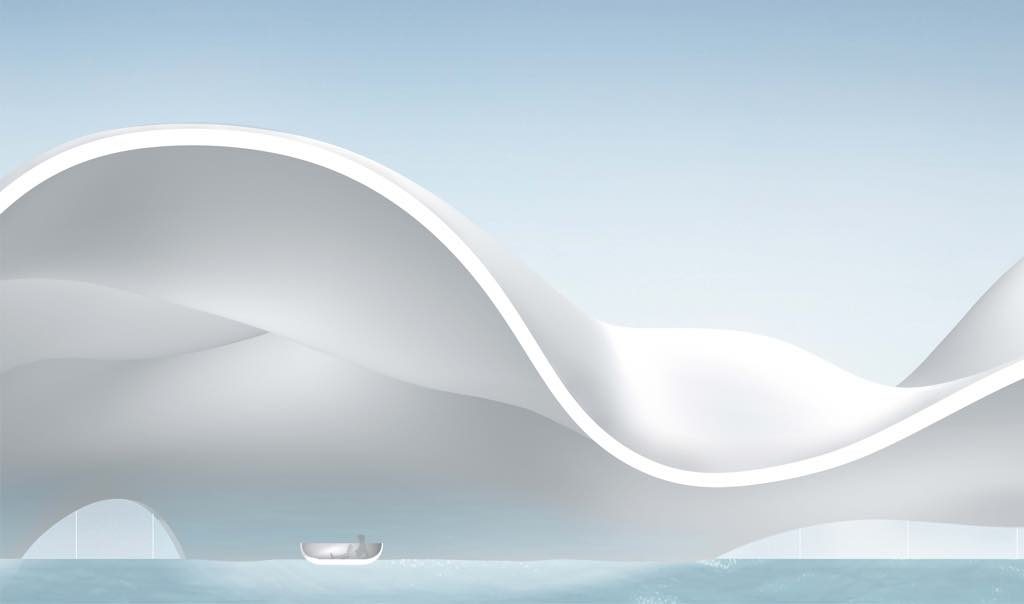
The Fondation Cartier has just extended the end date of the exhibition “Junya Ishigami: Freeing Architecture” to September 9, and I am very grateful. Otherwise, I might have missed this superb exhibition of the work of a rather madly creative Japanese architect.
Ishigami wants to abolish all preconceived ideas about architecture and design each project from scratch. He is quoted in the wall text as saying, “To think about architecture freely does not mean creating building forms that indulge the architect’s self-expression,” words that are music to my ears – too many architectural projects are just that. For Ishigami, freeing architecture means thinking through each project afresh.
Amazingly, considering that many of his ideas seem unrealizable, all but one of the projects presented in this show has been built or will be built. The exception is the “Home for the Elderly” project displayed in the basement, which was apparently canceled because it was too costly: it involved moving traditional houses from all over Japan to one location and grouping them together.
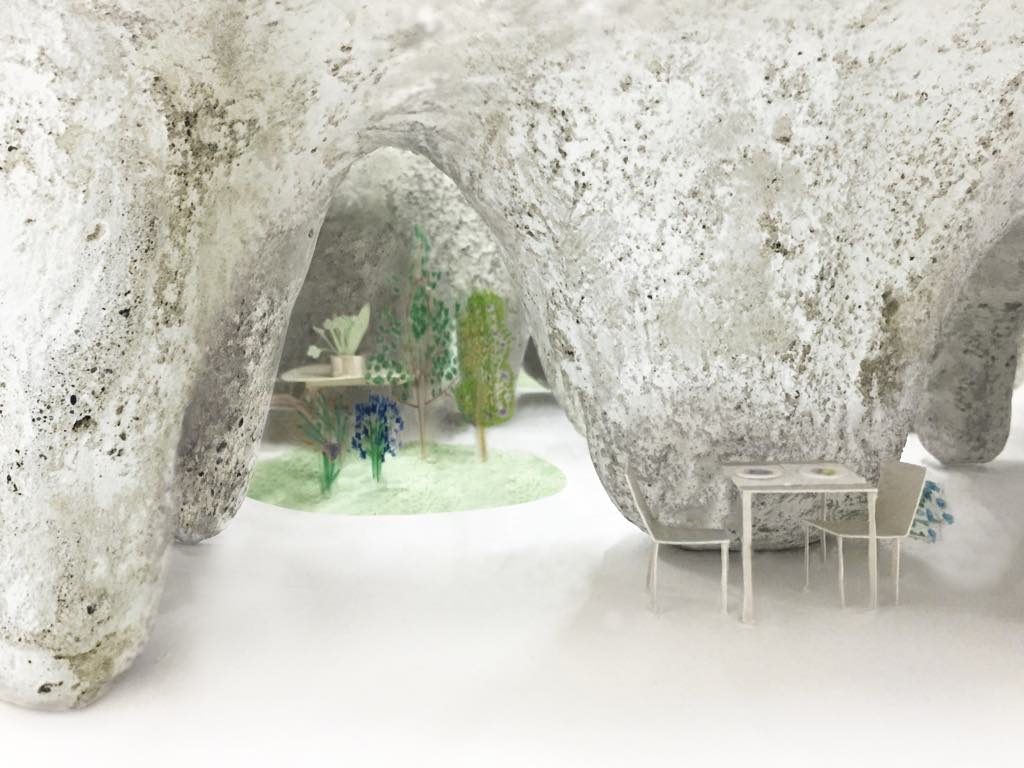
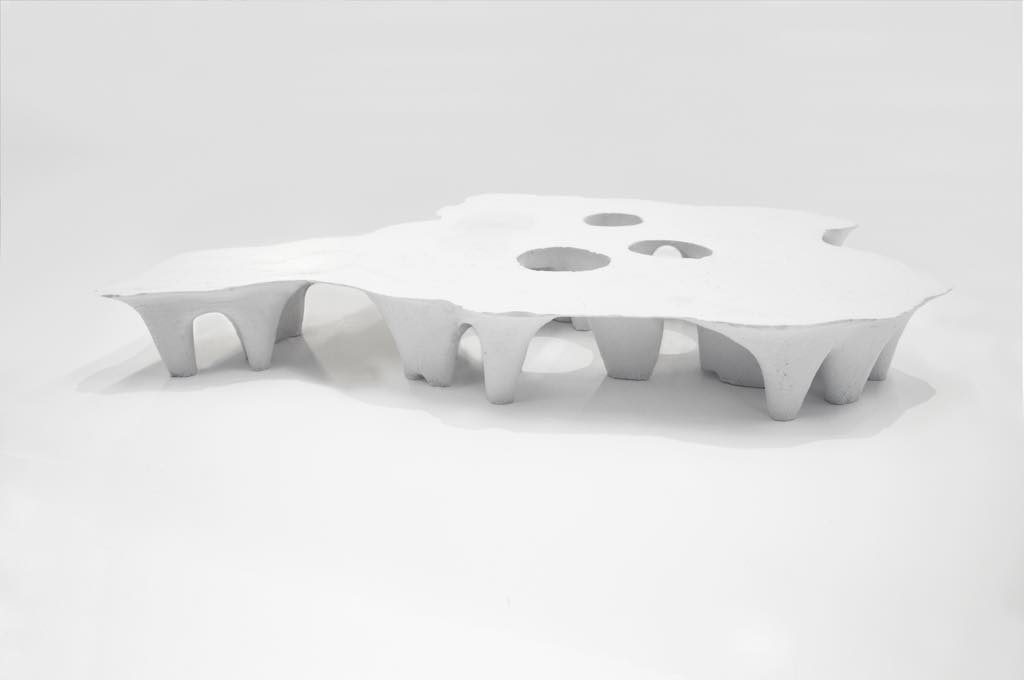
There is great poetry and artistry in Ishigami’s work and very little repetition of ideas. One of the most radical is his “House and Restaurant” (2013), which looks rather like a luxury home for the Flintstones. It was made by digging holes in the ground according to the architect’s plan, filling them in with concrete and then lifting the dried concrete structure out of the ground. A film in the exhibition shows how it was done.
Another wild yet infinitely seductive idea is the kilometer-long “Cultural Center” spanning a lake in China’s Shandong Province like a bridge with a roof. As visitors promenade through the gently curving structure, enjoying the views, they will be able to stop to have a bite to eat, shop, see a film or enjoy other entertainments.
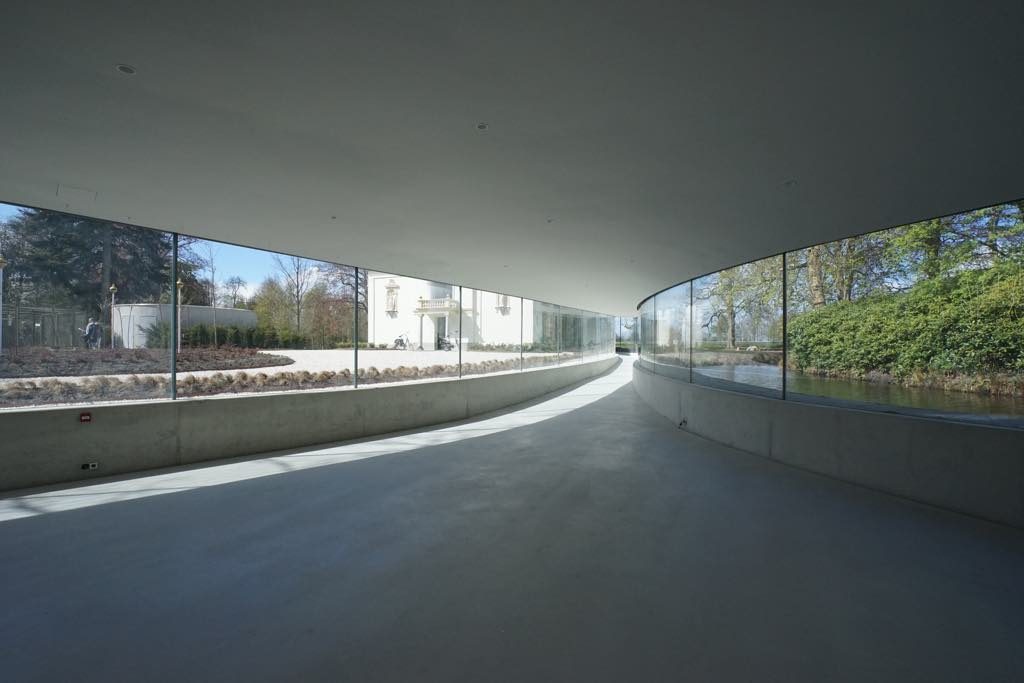
Slightly more traditional is the sinuous, three-pronged Park Groot Vijversburg Visitor Center in the Netherlands, with the points of the irregular-triangle-shaped building continuing like graceful tentacles in the form of glass walls into the surrounding forest, offering visitors a sheltered promenade that follows the pre-existing path.
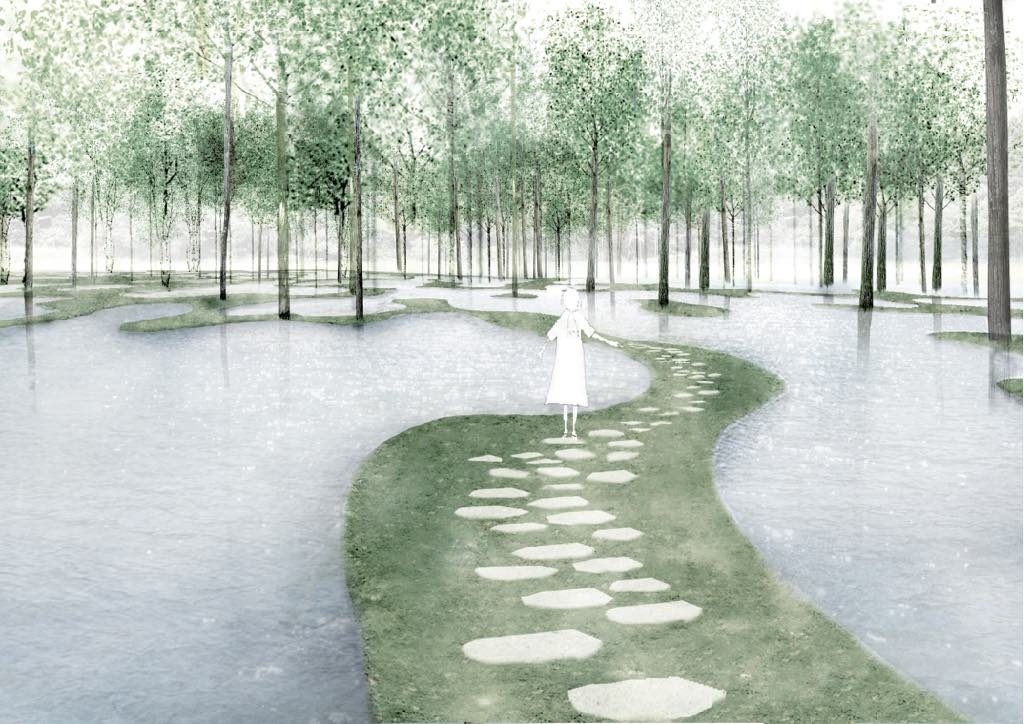
Probably the most poetic of these projects is the Water Garden at the Botanical Garden Art Biotop in Tochigi, Japan. Ishigami saved the trees that would have been cut down to build a hotel by moving them to a nearby meadow. He then created little ponds with organic shapes between the trees, a reference not only to the rice paddy that used to be there but also to the mossy forest that preceded it, creating a lyrical union of natural and manmade.
Every one of the 18 projects presented in the exhibition is fascinating and different from the others. And the models and plans are works of art in themselves. Don’t miss this show, and after you see it, take advantage of the Fondation Cartier’s own garden, cut off from the traffic noise and full of mature trees and wildflowers, to contemplate the show from outside.
Favorite
I loved this show! So glad you saw it. Spaces for dreams.